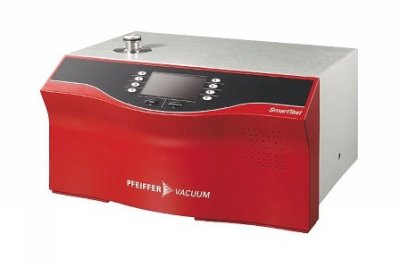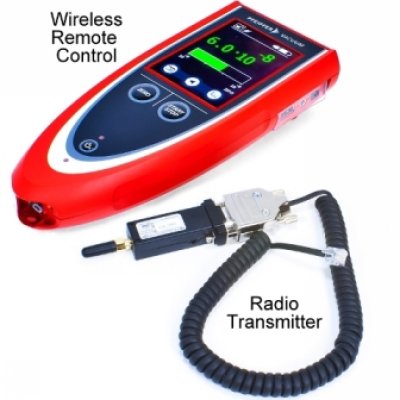14 Helium Leak Detection Facility
Contact: Mr.Rajamannar Swamy
(rajamannar AT ipr.res.in)
Ph.No: +91-79-2396 4420
We are using Pfeiffer Vacuum Helium Leak Detector to check the leak in various vacuum systems. This is a microprocessor-controlled leak-detecting equipment. All the processes in the instrument are controlled automatically. Leak detection in vacuum and sniffer mode is possible by this equipment. HLT 560 leak detector is having wireless remote control facility. Which is highly useful in leak detection of a large vacuum system.
 Technical Data :-
Technical Data :-
 Smallest detectable leak rate of He (Vacuum leak detection <5x10-12 mbar l/s)
Smallest detectable leak rate of He (Vacuum leak detection <5x10-12 mbar l/s)
 Smallest detectable leak rate of He (Sniffer leak detection <5x10-8 mbar l/s)
Smallest detectable leak rate of He (Sniffer leak detection <5x10-8 mbar l/s)
 Test Method:- Vacuum and Sniffer
Test Method:- Vacuum and Sniffer
 Detectable gas :- 4He,3He,H2
Detectable gas :- 4He,3He,H2
 Internal He-Test leak 10^-7 mbar l/s
Internal He-Test leak 10^-7 mbar l/s
 Leak rate display 10^-12 - 1 mbar l/s
Leak rate display 10^-12 - 1 mbar l/s
 Cold start to ready 3min
Cold start to ready 3min
 Response time 0.5sec
Response time 0.5sec
 Flange (In) DN 25 ISO KF
Flange (In) DN 25 ISO KF
 Inlet pressure Max 25mbar
Inlet pressure Max 25mbar
 Ambient temp 10-35 C
Ambient temp 10-35 C
 Interface: - RS232-C, RS485
Interface: - RS232-C, RS485
 Power Consumption: 400VA
Power Consumption: 400VA
 Analog Out Put: - Leak rate signal 2x0-10V lin/log
Analog Out Put: - Leak rate signal 2x0-10V lin/log
 Digital-output: - Ready to start, Ready to measure, Leak error, Bypass valve, Calibration,Acknowledge
Digital-output: - Ready to start, Ready to measure, Leak error, Bypass valve, Calibration,Acknowledge
RC 500 WL remote control
 The RC 500 WL remote control operates the leak detectors SmartTest HLT 560 remotely.
The RC 500 WL remote control operates the leak detectors SmartTest HLT 560 remotely.
 It is accommodated in a robust housing the shape of which enables ergonomic working. Magnets on the underside of the unit enable it to be attached to horizontal or vertical metal surfaces.
It is accommodated in a robust housing the shape of which enables ergonomic working. Magnets on the underside of the unit enable it to be attached to horizontal or vertical metal surfaces.
 Remote operation works over a distance of 100 m, depending on the reception conditions. The integrated rechargeable battery enables over 8 hours of operation, depending on the battery level.
Remote operation works over a distance of 100 m, depending on the reception conditions. The integrated rechargeable battery enables over 8 hours of operation, depending on the battery level.
 The leak rates can be displayed in digits or in a curve on the colour display.
The leak rates can be displayed in digits or in a curve on the colour display.
 Measured values of up to several hours of recording can be stored in an internal memory. The data storage interval is adjustable. The data can easily be downloaded to a USB stick via the integrated USB interface to save it
Measured values of up to several hours of recording can be stored in an internal memory. The data storage interval is adjustable. The data can easily be downloaded to a USB stick via the integrated USB interface to save it
 An internal trigger can be set to provide a warning if the limit leak rates are exceeded. An optical warning is shown on the display and an acoustic warning signal with variable pitch proportionally to the leak rate is sounded on the integrated loudspeaker or the connected headphones.
An internal trigger can be set to provide a warning if the limit leak rates are exceeded. An optical warning is shown on the display and an acoustic warning signal with variable pitch proportionally to the leak rate is sounded on the integrated loudspeaker or the connected headphones.



